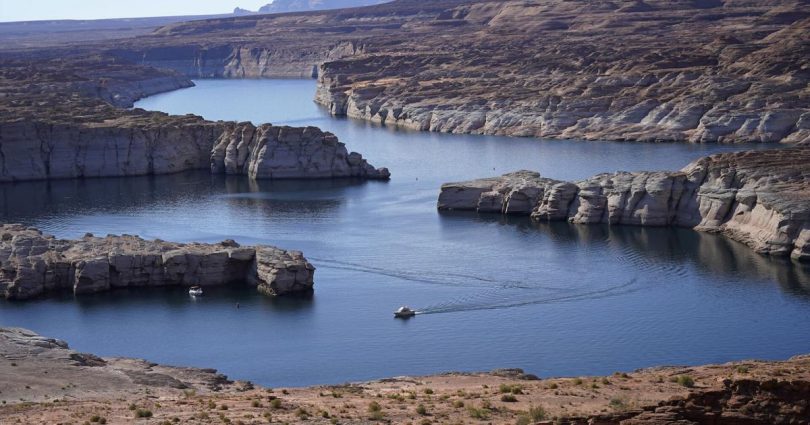[ad_1]
While prices at the gas pump — and a cutback in Russian oil tied the invasion of Ukraine — have created headaches in Colorado and around the world, there’s a silver lining: a boost in the money available for the state’s water plan.
Increases in oil and gas prices, as well as boosted production in Colorado, have resulted in an uptick in severance tax collections. Gov. Jared Polis earlier this week asked the Colorado Water Conservation Board to take $17 million from those severance tax revenues and use it to help “kick-start local-level implementation of the recently updated Colorado Water Plan.”
In his letter to the CWCB Tuesday, Polis said climate change, prolonged drought and aging water infrastructure are barriers to achieving the water plan’s vision.
“We remain undaunted by that challenge and my administration is working hard to overcome these barriers by leveraging resources and seizing upon opportunities to secure funds for aging infrastructure and drought resiliency projects,” he said in the letter.
The CWCB agreed to that request during its monthly board meeting Wednesday.
“The governor is incredibly supportive of this funding,” said Dan Gibbs, executive director of the Department of Natural Resources. “This is a great opportunity…to empower our basins to advance resiliency, to work with the challenges we have in the basins to get projects off the ground.” Gibbs told the CWCB board the timing is unique, given both these new funds as well as the federal infrastructure funding expected in the coming months.
Gibbs called the boost “real money” that could be leveraged for other resources.
The boost in severance tax collections was first noted in the June 22 revenue forecast from legislative economists and the governor’s Office of State Planning and Budgeting.
Severance tax collections, which fund water projects and pay for impacts to local communities from oil and gas activity, hit a 31-year low of just $14.7 million in the 2020-21 fiscal year. That was a critical blow, since severance tax collections were expected to be one of the major funding sources for the state water plan when it was first rolled out in 2015.
The recent change in oil and gas prices and production, according to the June 20 forecast, led to a better than 20-fold increase of close to $310 million in severance taxes in the current fiscal year. The forecast noted that in April, the state collected $184.3 million alone, the biggest one-month payment in recent history. The forecast said that was due both to increased activity, oil prices at $100 per barrel or higher, as well as previously underestimated tax liabilities.
The extra money comes at a time when the water plan, now in its seventh year, has suffered from a lack of dedicated funding to pay for the estimated $3 billion price tag the state has to bear, which rounds out to roughly $100 million per year.
Lawmakers and governors, both Polis and then-Gov. John Hickenlooper, have not found a way to cover the bulk of the state’s share of the water plan’s $20 billion overall cost.
Most of that $20 billion was expected to be covered through higher water rates, federal grants and loans, and severance tax collections. But the volatility of the oil and gas market has made those severance tax revenues less reliable in recent years. That volatility is expected to continue, according to the forecast: Estimates for 2022-23 are for $310.4 million, but will drop off to $229.4 million the next year and to $169 million the following year.
The state’s annual share has been funded for only a fraction of that. The water plan got $20 million in the 2020-21 state budget, and $10 million in general funds in the current budget. However, general fund dollars were never expected to be a part of the funding stream for the water plan.
The one dedicated funding stream so far has been from revenues from Proposition DD, which levies a tax on sports betting, though those revenues have not been as robust as hoped for, due to inflation and the pandemic.
Since the first bets were placed in May 2020, nearly $7 billion has been wagered. Legislation in 2022 appropriated $8.2 million from DD money to the water plan, but it’s less than was projected when voters approved the ballot measure in 2019. At that time, estimates claimed that between $15 million and $27 million from sports betting taxes would annually funnel into the water plan.
[ad_2]
Source link








